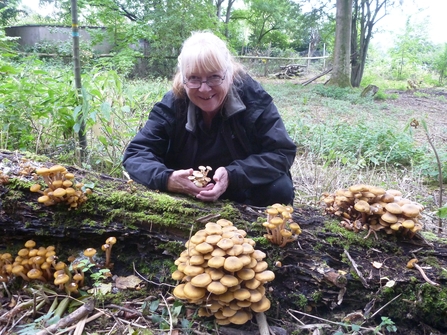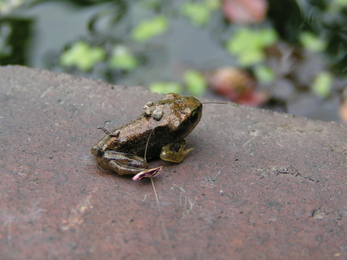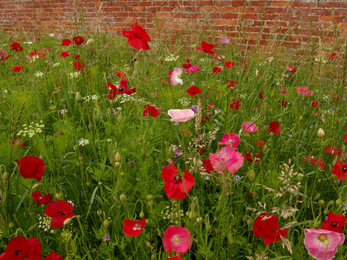A source of fresh water is vital for all creatures, so make sure you keep the bird bath filled and clean.
High summer in the wildlife garden
(c) Gillian Day
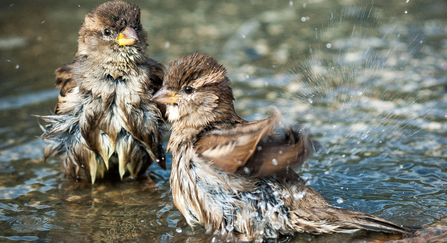
House sparrows (c) Chris Speller
Think about how available it is to all of your garden visitors, for example, if you have one on a pedestal or support, could a thirsty hedgehog or vole reach it? Is it shallow enough?
An additional bath – just a big plant saucer will do – set on the ground allows everyone to get a drink.
If you have a pond, especially a small one, you might find the water level drops alarmingly. Don’t be tempted to fill it from the tap. A sudden inrush of mains temperature water can be a fatal shock to the underwater life. Rainwater is much better, so use the water butt if you can.
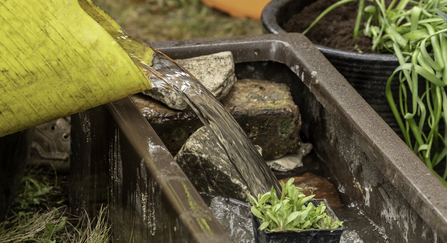
Failing that, fill large tubs from the hose and let them stand for at least 24 hours before adding to the pond. Tempered water is also much better for your plants, so keep the tub full for watering plants in pots too.
You can save water you’ve used to rinse salads, fruit etc and add it to the tub so you always have some on hand. Think about where you might install more rainwater butts if you find yourself running short.
Try to rationalise your watering. Tender young plants need to be kept watered, but you really don’t need to water lawns and shrubs. Grass is very resilient, and will survive even if it starts to look parched and brown. As soon as the rain comes (and it will!) the grass will green up again. Think of the Serengeti! If you need to water the vegetable patch, use a can to direct water to the roots of plants rather than a wasteful sprinkler, and water late in the day to avoid evaporation.
Saving water is vital to the health of our rivers and streams.
Leaving your lawn to grow longer helps to keep it green, and is better for wildlife. If you really must mow the lawn, set the mower blades on the highest setting, and leave some unmown patches, preferably in the shade.
These will provide cover for young frogs, toads and newts emerging from ponds and looking for somewhere damp to hide.
Feeding the birds is a year-round hobby for many of us, and our garden friends will be looking rather tatty now as the hectic breeding season slows down and they go into moult.
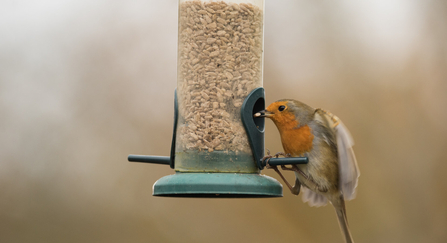
Robin on feeder (c) Janet Packham
Make sure high quality food is available to help them through the demands of growing a new outfit.
In hot weather, it’s better not to offer fat blocks or balls, as these can become soft and greasy, and can foul the birds’ feathers. Try mealworms – soak dried ones before putting them out. Good quality seed is fine, but do make sure water is available.
Above all, though, enjoy your garden. Sit out and listen to the hum of insects, watch the bees and butterflies, and make the most of the fine weather. This is pay-back time - all that hard work was worth it!
